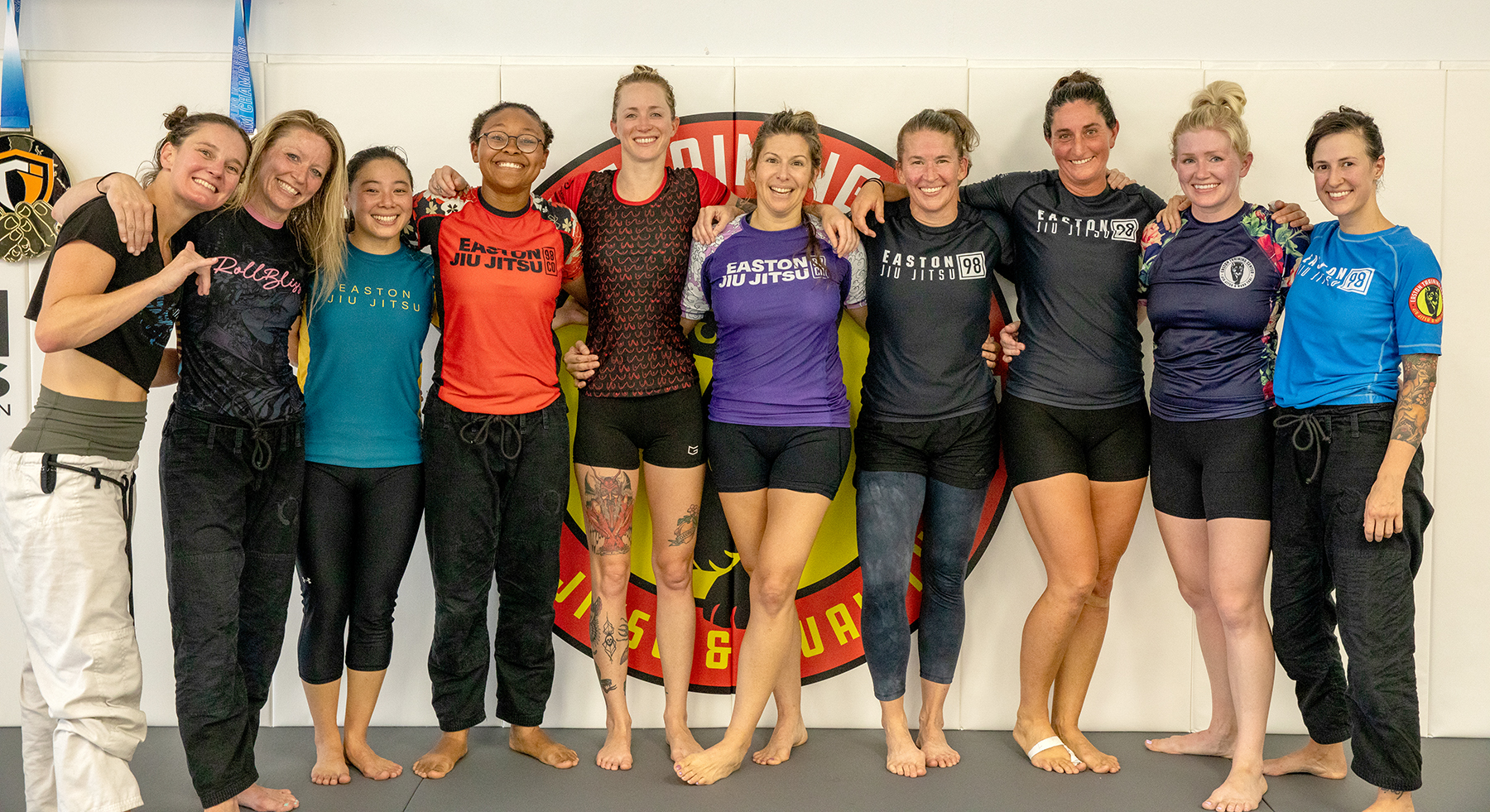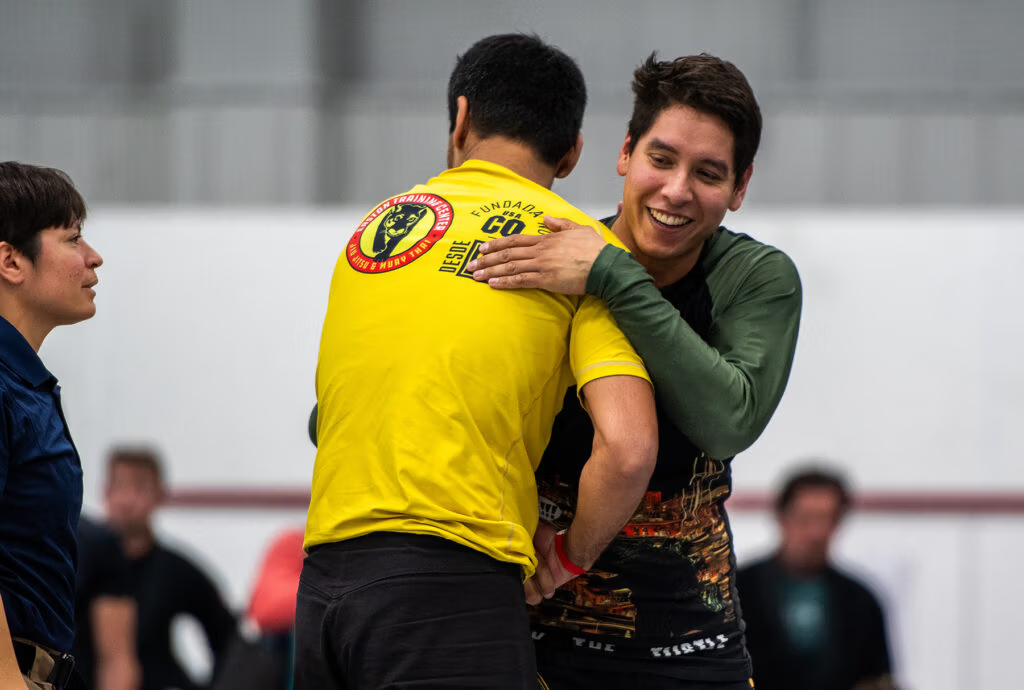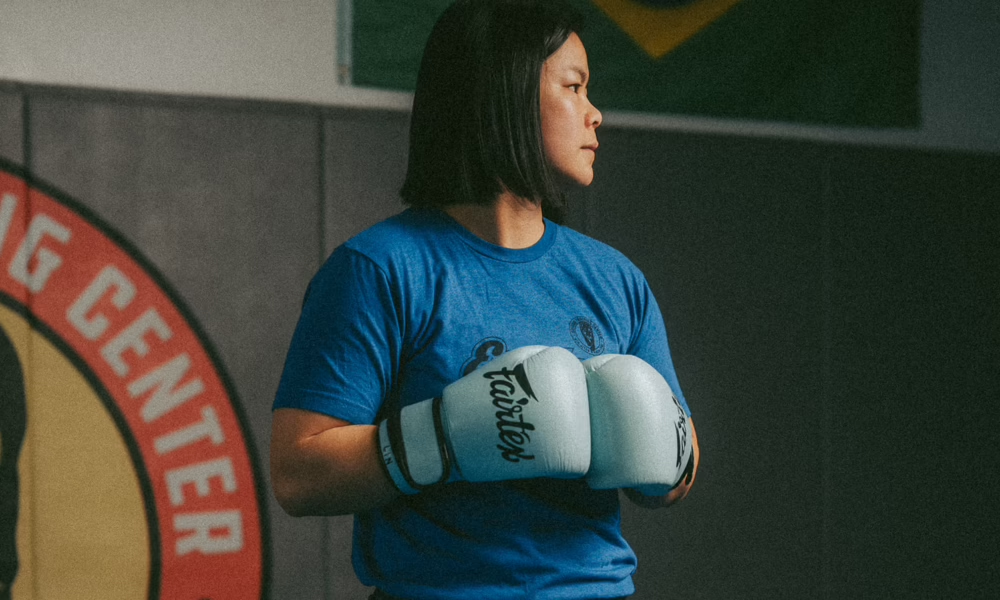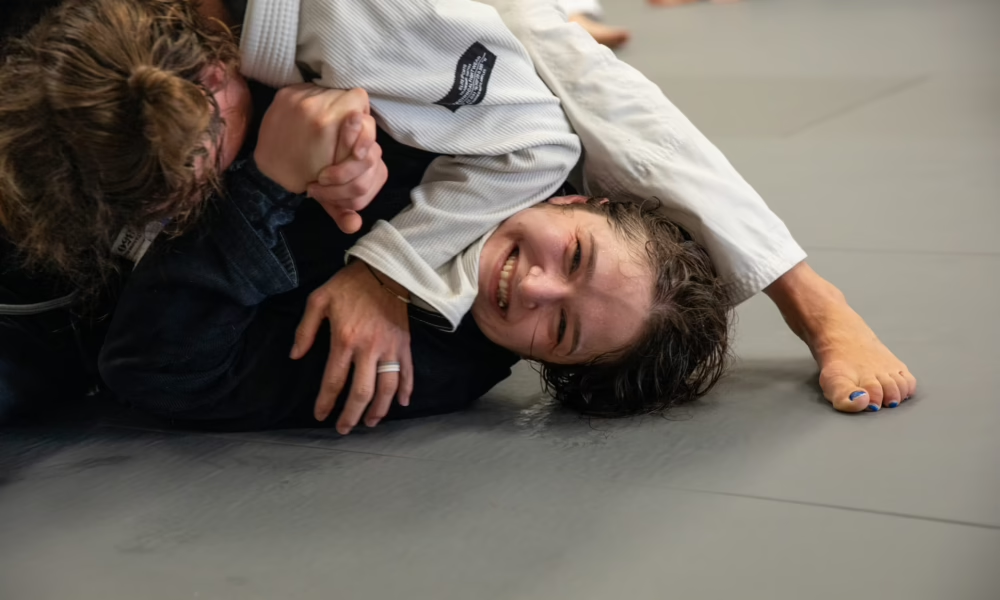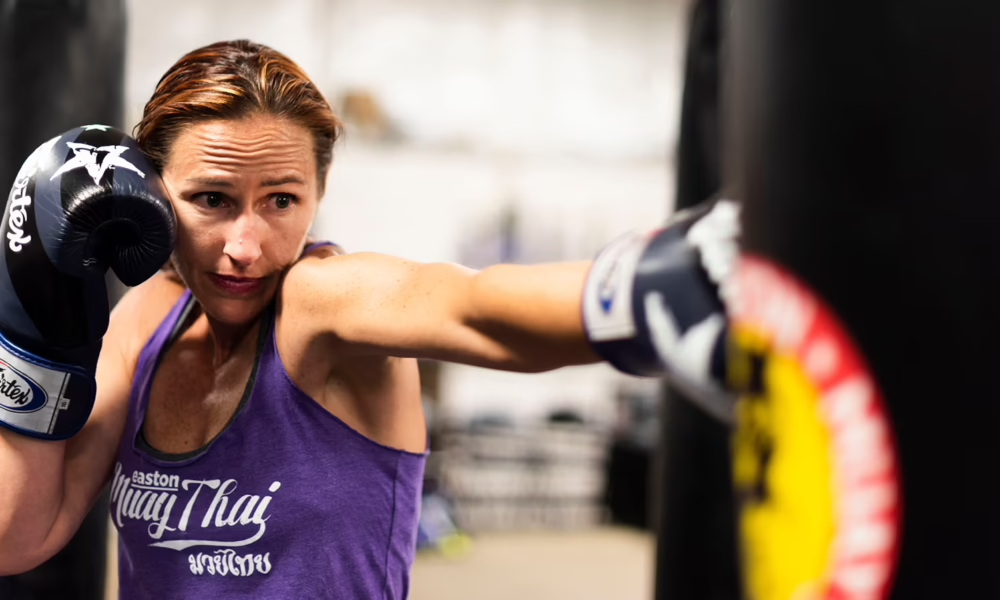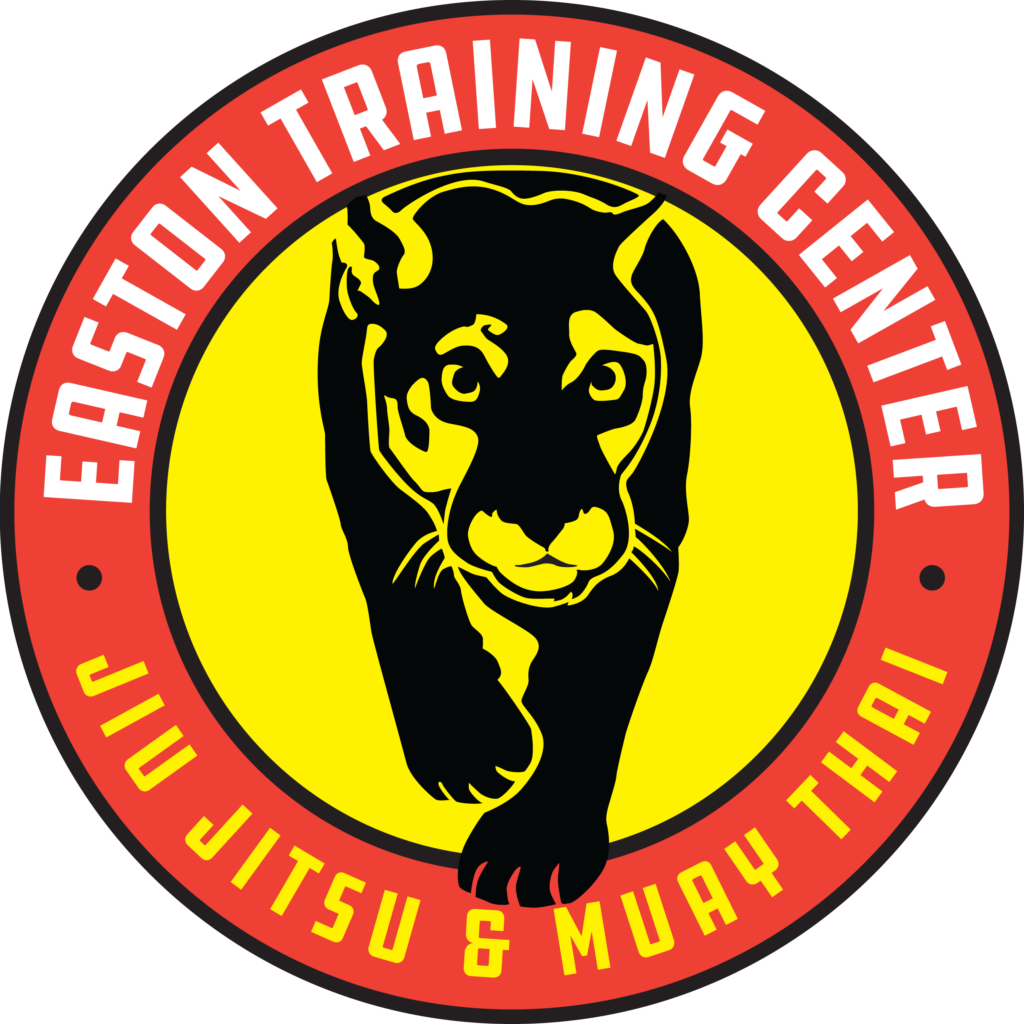Brazilian Jiu Jitsu and Muay Thai capitalize on the art of getting comfortable with discomfort. For most people, add close physical contact, heavy pressure and sweat, and many opt out having never even tried. This fact often doubles when it comes to women in the sports.
In the male-dominated field of combat sports, simply being a woman can add several layers of challenges and obstacles – both mental and physical – but it also comes with benefits. By facing these challenges and learning martial arts, women can learn to navigate the world with strength, resilience, and confidence.
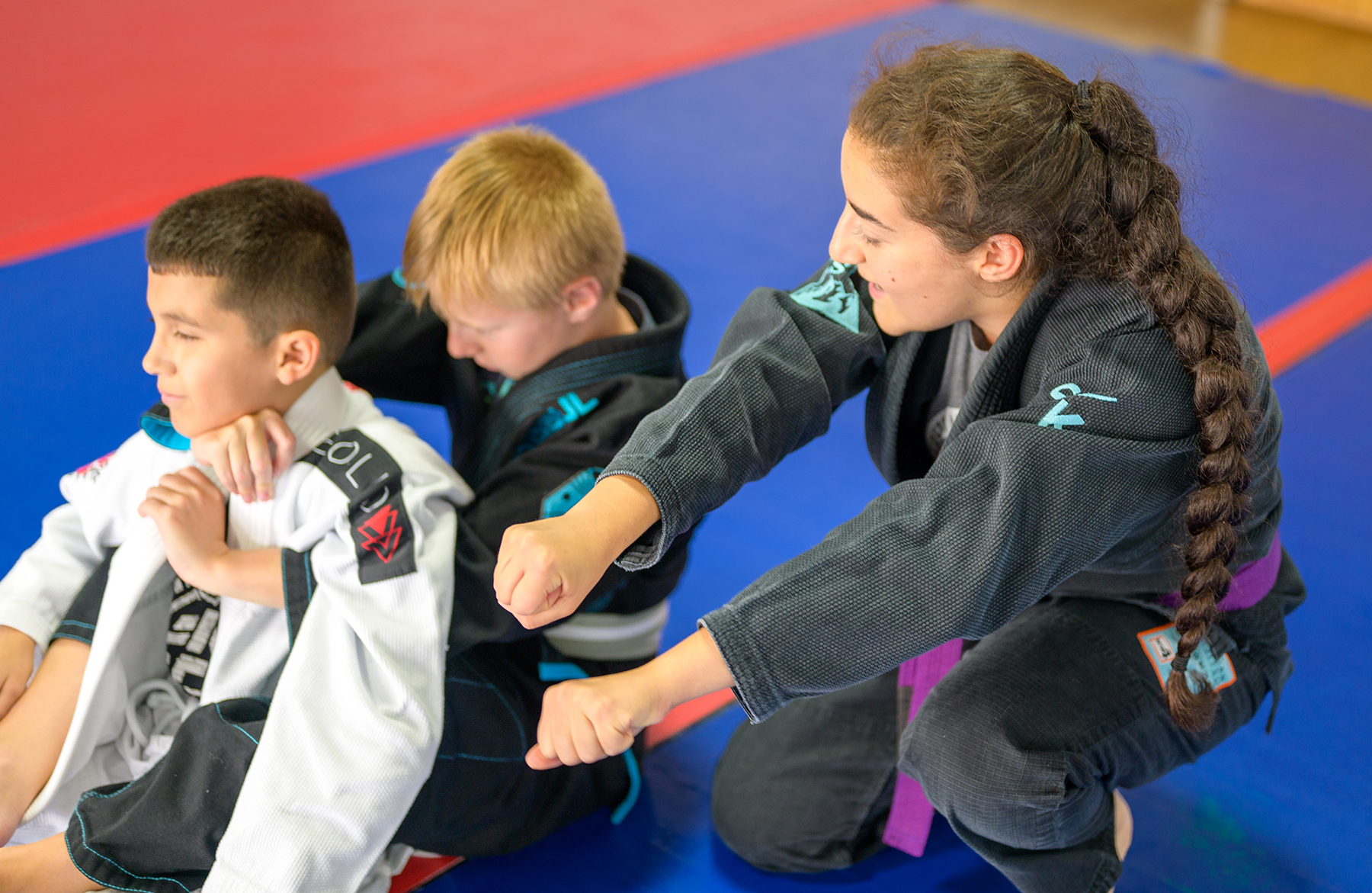
Typically smaller and with less muscle mass than men, women have traditionally held the minority in martial arts spaces. They also come to the room bringing a completely different set of experiences than their male counterparts.
In the United States, women make up approximately 20.7% of martial arts instructors, while men bring in 79.3%. The UFC didn’t start incorporating female fighters until 2013! Even now in 2024, there are significantly less professional female fighters compared to male fighters.
There are currently 799 active male fighters in the UFC compared to 152 active female fighters. Since the UFC’s inception in 1993, there have been 2,657 male fighters and 279 female fighters in total.
[How Watching Women’s Sports Empowers Young Athletes]
Martial arts at Easton
If you’ve felt nervous about trying Jiu Jitsu as a woman, we’ve all been there or seen it. For this reason, Easton takes pride in its female staff, students and competitors who continue to create a welcoming and empowering environment for new female students. We also try to actively foster our women’s community through unique classes and events.
We never want to isolate women from the rest of the community, but we recognize that some women may need a little time to get comfortable before diving into the regular adult class. Most often, that comfort is usually found around fellow ladies who nurture their confidence.
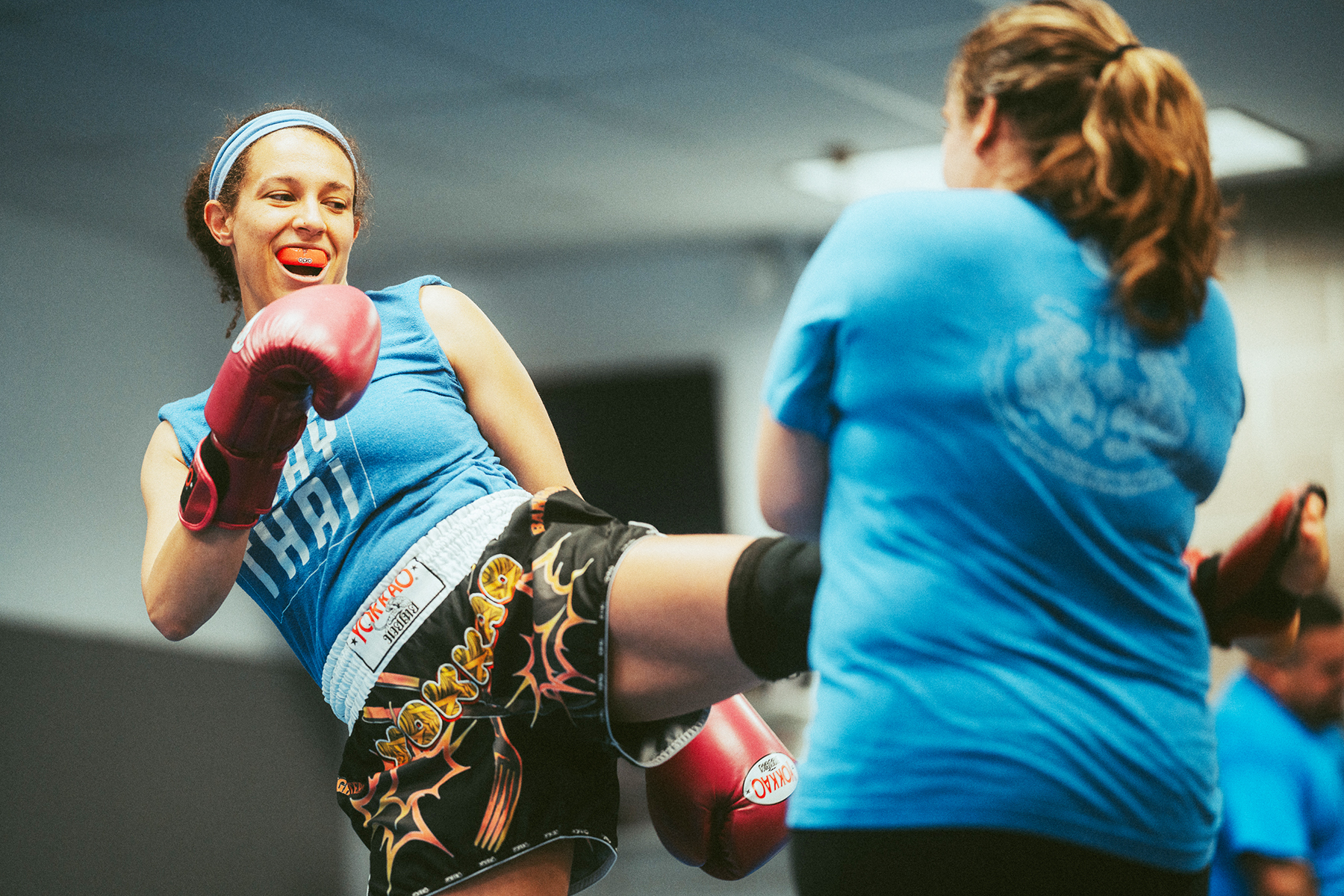
We even created a docuseries called The Women of Easton to share the stories and experiences of some of the most impactful, longtime females in our organization.
To Luma Murib, a Purple Belt from Matrix, training in Jiu Jitsu makes her feel strong and confident. She tells us that having security in her ability to protect herself, and regularly training with men two or three times her size, feels like a superpower. It has also fostered her love for learning how to be comfortable in uncomfortable situations.
“Training makes me more resilient,” says Luma, “and mentally tough. It helps me show up for myself because I’m doing something difficult and constantly sharpening my sword.”
In fact, Jiu Jitsu with Easton – and how the community and school became her home – was one of the main reasons Luma chose to stay in Colorado. However, this doesn’t mean that Luma doesn’t have her share of frustrations on the mat.
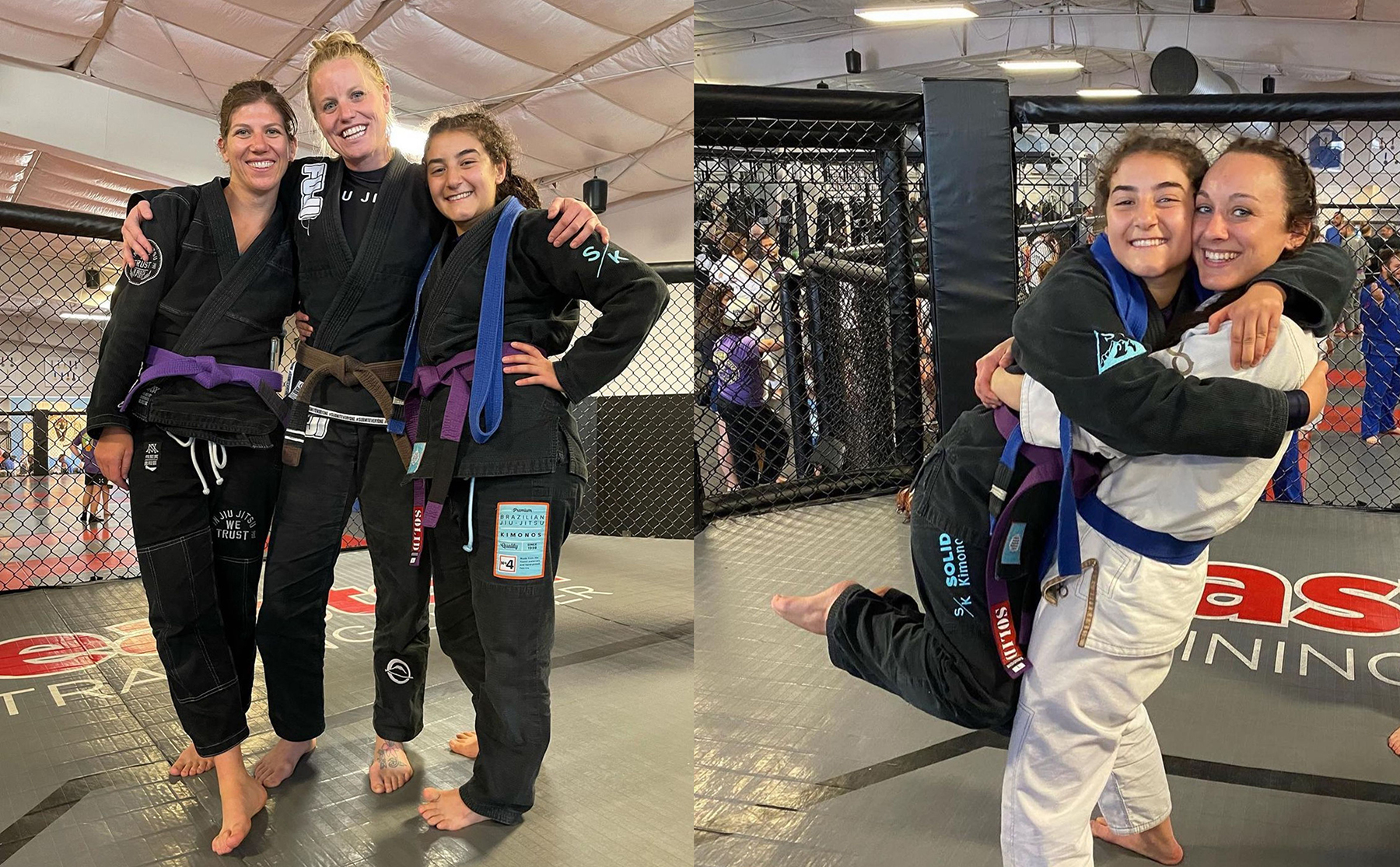
Moving through unique discomforts
To mark her progress, rather than comparing herself to others in the room, most of which usually consist of men, Luma compares herself to how she did last week or last month.
“Every single day, I will go against someone who can out-muscle me and outweigh me,” Luma says, “so my growth cannot be determined by how many people I tapped that night. I have to use a unique approach to gauge my growth.”
Being a woman in BJJ means Luma rarely gets to go against people her own size. It means she can be the highest ranked belt in class and will still get picked last or not picked at all to roll.
It also means that when she does get picked, she’s usually someone’s rest round – which means she has to give these guys a run for their money.
It also means a lower belt will inevitably ask her if they should take it easy because he’s bigger than her, which can make her want to scream. (If they used better technique, Luma says, they wouldn’t be afraid to hurt her.)
On the other side of it, Nikki Hindes, a Black Belt from Boulder, has experienced injuries from ACL to torn AC joins and concussions due to large male opponents. The big boys, she points out, can sometimes be neglectful and ignorant of the size difference.
“As a female,” says Nikki, “all I want to do is go beat them up. But I physically can’t!”
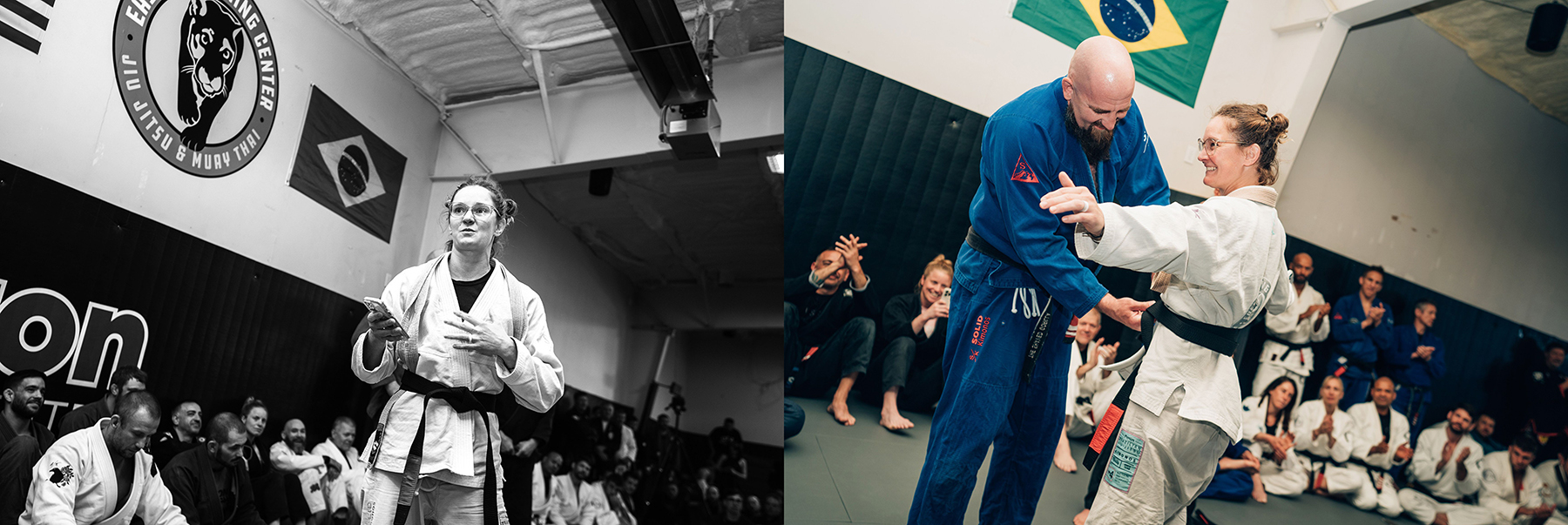
In Nikki’s experience, on the mats exist both the light and dark sides of ego – and they’re everywhere. The dark side shows up randomly and can get the best of us all.
Ego doesn’t have to be inherently bad – we need our egos to survive, to keep us alert to danger and to drive our ambitions. An unhealthy ego, however, can have us consumed with the need to win at all costs.
Some men struggle when a woman is higher ranked or better than them, and they will use their weight and power to dominate her. Nikki tells us that it can be both frustrating and scary at times when you can feel them becoming frustrated – especially when you never get to roll with anyone lighter than you.
“Jiu Jitsu has given me an outlet,” says Nikki, “for my aggressive personality and the ability to fight through my own internal battles. It comes down to learning to control your own thoughts and manage overwhelming situations.”
If something feels off, or your partner is rolling too hard – say something. Talk to him, tell the coach, speak up. Being a good student means setting and respecting your own boundaries so that you can continue to train.
[Finding Balance: Technique Over Intensity in Martial Arts]
Setting a new standard
Allie Readmond, Easton’s homegrown Muay Thai Brown Shirt, recently competed in Greece in the IFMA Senior World Championship.
She tells us that entering the world of competition created a new set of challenges to navigate physically and mentally when it came to the underlying discrepancy between the male and female fighting experience.
Whereas she always feels respected and valued at Easton, that’s not always the case in combat sports, where women are under-represented. In some places, men might see the women in their communities as opportunities rather than equals – whether this means a rest round, an easy target or a way to bolster their egos off the mats.
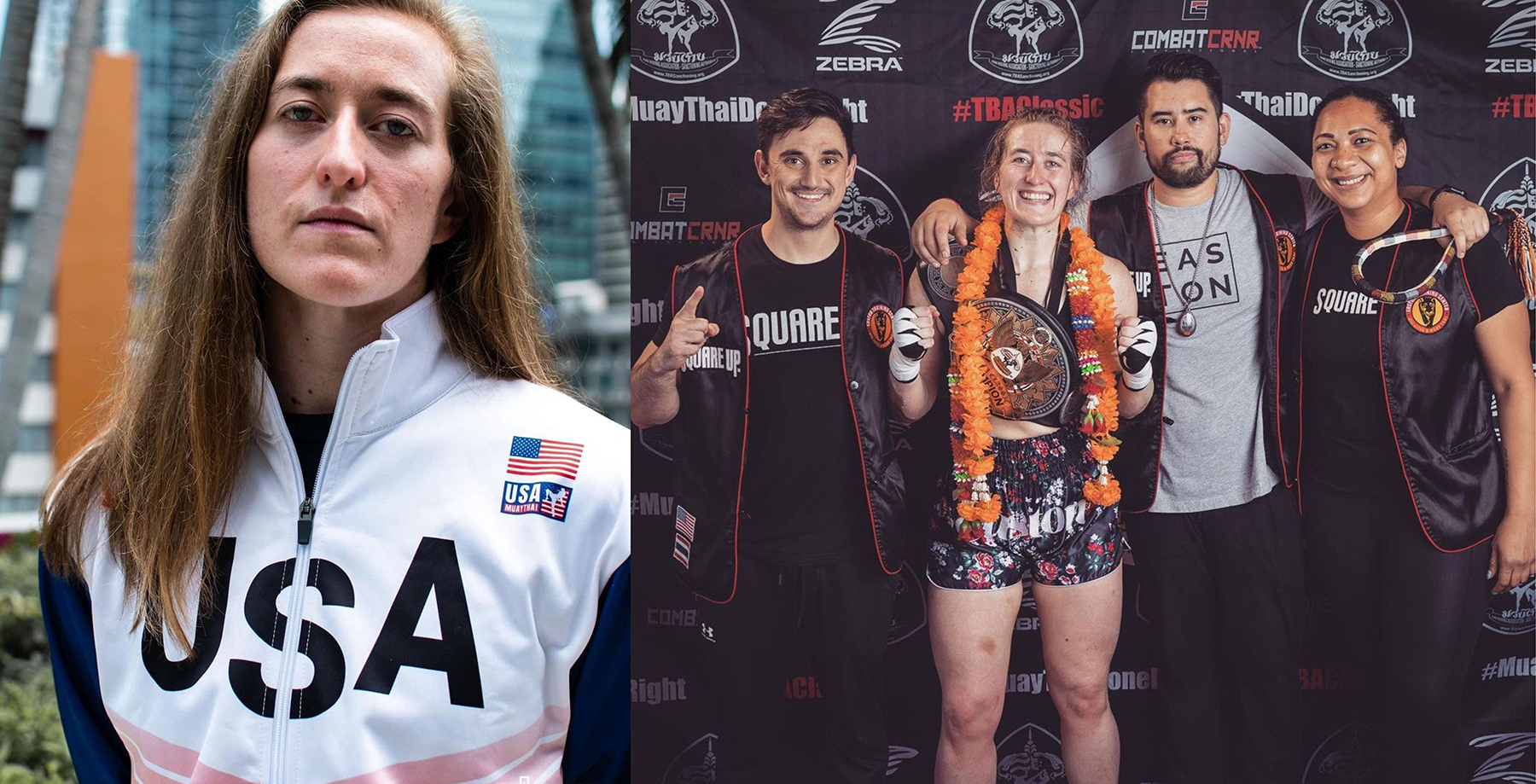
It can also be surprising when women don’t act the way society expects them to. This can mean anything from not smiling and cooing at babies to not immediately befriending each other at weigh-ins.
“In general, with combat sports,” says Allie, “I have a little frustration because women are kind of expected to be really, really nice…and that doesn’t necessarily serve us for wanting to go after each other [in the ring]. Being super nice, smiling in weigh-in pictures – that’s an aspect that’s really unequal. Men are not expected to do that.”
Men don’t expect this sort of warmth from each other, yet women often get called “cold” or “bitchy” simply for the same thing. Translation: not going out of their way to express a nurturing personality. After all, according to society, a woman must also make everyone around her feel safe, seen and appreciated.
This double standard means that women have to work twice as hard emotionally to keep up with all of these expectations. Sometimes it can feel like a lose-lose scenario: if you’re too nice, nobody takes you seriously; if you’re not nice enough, you get labeled as rude.
Women already frequently navigate the balancing of their needs with the feelings of others, often at the expense of feeling out of alignment with themselves. Even in some female friendships, hard conversations may subside in favor of harmony, or truths get held back to spare feelings. The result can feel isolating, repressive and sometimes explosive.
However, in competition, you have to check this. You’re not there to play to anybody’s feelings. You’re there to do your job: be ruthless, respectful and focused.
[All About Balance: Training, Recovery + Life]
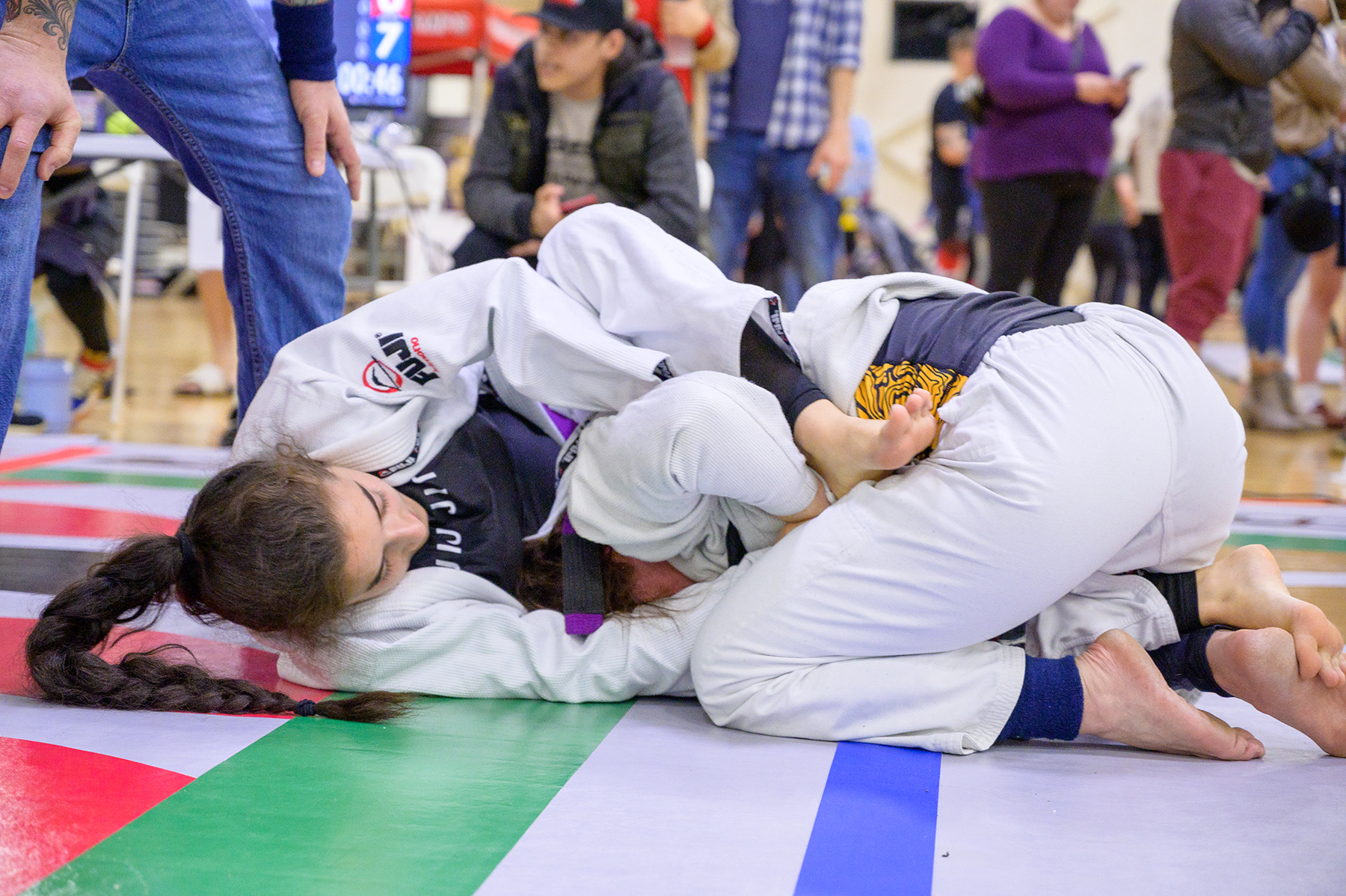
Channeling power
For professional MMA fighter and Centennial BJJ Kids Coach Mallory Martin, who has trained in both Muay Thai and Jiu Jitsu for the last 12 years, martial arts turned out to be the perfect way to channel the aggressive part of her athletic personality.
“When I tried out for soccer,” Mallory tells us, “I had never played before, but I was so aggressive that I could slide tackle people and keep them away and let the good girl keep the ball. I would get red-carded nearly every time.”
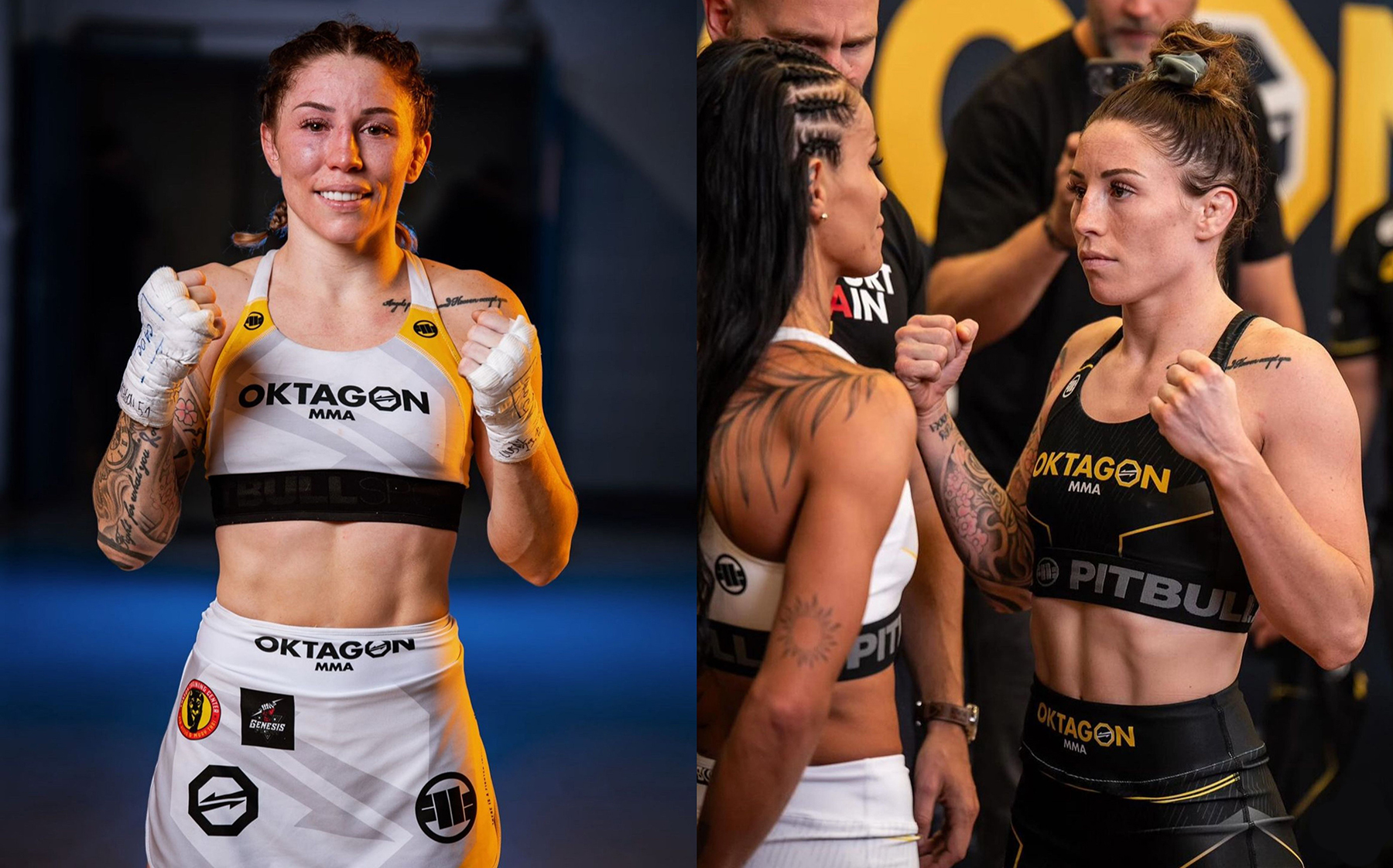
Prior to martial arts, Mallory also played volleyball and basketball throughout school, and she ran track and did powerlifting in high school. Senior year, she began training at Zingano’s, a BJJ and MMA school run by former UFC fighter Cat Zingano who became her role model.
From her perspective, the community of women in martial arts usually breaks down into two categories – the 50 percent who know what they want and are there to achieve it, and the 50 percent are there to have fun, make friends, maybe be around the boys.
“I knew what I wanted,” says Mallory. “I’d go into the gym and I wouldn’t even talk to a single person because I had one goal. I really wanted to become that, and achieve that. I was so focused on training, they used to call me Grumpy Cat.”
Even Mallory, however, has observed times when a man would rather go easy than test a skilled woman’s limits. A strong female student may tap out all of the men in her ranking – given good resistance – yet find no challenge when it comes to training with upper belts.
“Sometimes it may be fear of hurting the woman,” says Mallory, “but more often than not, it’s about the ego. They know she’s good, so they’d rather tone all the way down to 30 percent and be a limp noodle instead of taking the chance that she may give them a run for their money.”

In those cases, Mallory tells her female students to go as hard as they can and beat those upper belts up (so to say) – get them into positions where they have to work. Or they can tap out and you get your reps in.
Without the focus on external validation or comparison, you’ll begin to tap into the inner power and fully concentrate on growing that.
“If you have the confidence,” Mallory says, “there shouldn’t be any ‘needing to prove.’ You have the confidence and that little swag because you had those experiences you can lean on.”
Proving yourself implies needing to measure up to someone else’s standards or baseline whereas confidence ensures that baseline comes from within.
